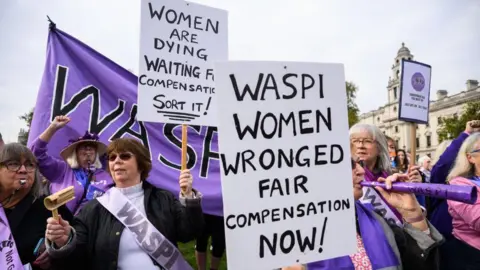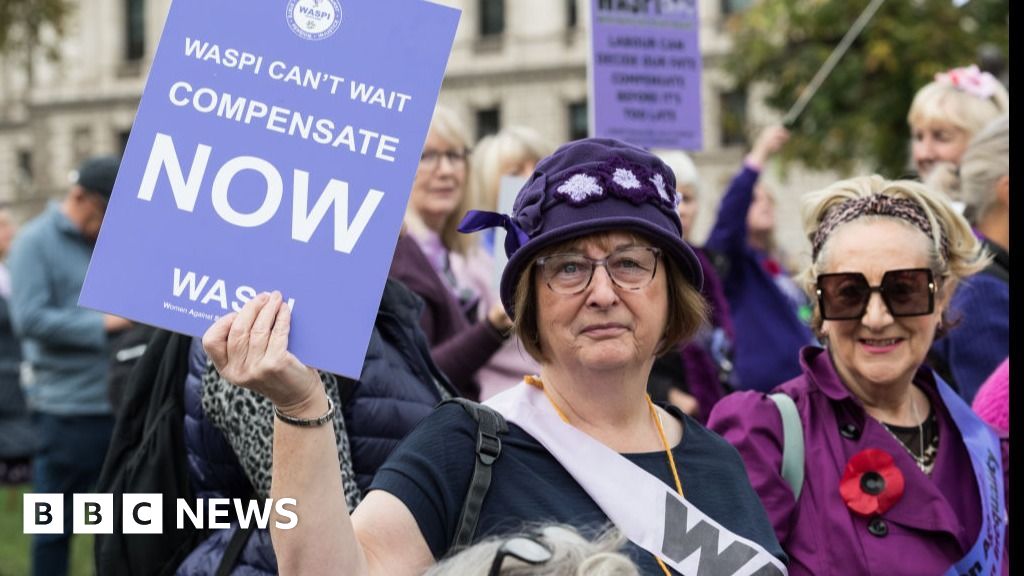
Women Against State Pension Inequality is a campaign that has become one of the most significant grassroots movements in modern UK history. It represents millions of women born in the 1950s who experienced abrupt and unfair changes to their state pension age. For many, this shift was devastating, leading to financial insecurity, job uncertainty, and years of retirement planning being wiped out with little warning.
At its heart, the campaign highlights how government policies can affect ordinary citizens in ways that are deeply unjust. It is not a movement against equality but one that demands fairness in how reforms are implemented. Women Against State Pension Inequality continues to dominate national headlines, influence parliamentary debates, and maintain a strong presence in communities across the UK, proving that perseverance can keep an issue alive for years.
What is Women Against State Pension Inequality
Women Against State Pension Inequality, often known by the abbreviation WASPI, is a voluntary organisation launched in 2015. It was created in response to the government’s decision to accelerate the equalisation of the state pension age for men and women. Campaigners stress that the injustice was not in the equalisation itself, but in the lack of notice given to affected women, leaving them unable to prepare financially for later retirement.
The abbreviation WASPI has become a household term across the UK, symbolising solidarity among women who feel ignored by the government. The campaign is run voluntarily and has achieved remarkable reach with limited resources. Through petitions, grassroots lobbying, and direct action, Women Against State Pension Inequality has built momentum and forced MPs to confront the consequences of policies that were introduced without adequate transitional arrangements.
The Pension Age Changes and Their Impact
The original pension system allowed women to retire at 60 while men retired at 65. In 1995, the Conservative government passed legislation to raise women’s pension age to 65 in order to match men’s, with the changes taking effect gradually from 2010 to 2020. Later adjustments in the 2011 Pensions Act sped up this process, leading to sharp and unexpected increases. Women Against State Pension Inequality argue that these changes were poorly communicated.
For many women born in the 1950s, the impact was shocking. Some discovered they would have to wait up to six years longer for their pension, sometimes with only a year or two of notice. This left many struggling to bridge the financial gap, particularly those in manual jobs or caring roles who could not extend their working lives easily. The effect was not just financial but also emotional, creating feelings of betrayal and anger.
Women Against State Pension Inequality News and Latest Updates

The campaign continues to make news in the UK. In recent years, parliamentary petitions calling for compensation have attracted millions of signatures. Women Against State Pension Inequality has also been the subject of heated debates in the House of Commons and Lords. The Parliamentary Ombudsman has ruled that the Department for Work and Pensions committed maladministration in its handling of pension age changes.
However, the government has resisted awarding compensation, citing financial constraints and budgetary pressures. This refusal has angered campaigners and drawn criticism from opposition parties, unions, and advocacy groups. Women Against State Pension Inequality has not stopped its fight, organising protests, public awareness campaigns, and engaging in legal challenges. News outlets regularly report on these updates, keeping the issue firmly in the public eye and ensuring that pressure on the government does not fade.
The Fight for Fair Compensation
At the centre of the Women Against State Pension Inequality movement is the demand for fair compensation. Campaigners argue that the government should introduce a transitional arrangement to make up for financial losses caused by the abrupt increase in pension age. The group has proposed a compensation scheme where affected women would receive payments depending on how severely they were impacted.
Many women use the WASPI calculator to estimate their potential losses, which in some cases can amount to tens of thousands of pounds. Compensation is viewed as both a moral and financial necessity. Campaigners stress that they are not opposed to equalisation itself, but to the unfair way it was introduced. The issue continues to be raised in legal challenges, judicial reviews, and in the corridors of Westminster, with MPs from across parties pledging support.
Wider Context of Women’s Movements
The struggle of Women Against State Pension Inequality connects with the wider history of women-led activism in Britain. From the Women Against Pit Closures movement during the miners’ strikes of the 1980s to campaigns like Women Against Violence and Women Against Hate, women have consistently fought for fairness, justice, and social recognition. WASPI is part of this tradition, showing how grassroots mobilisation can hold governments accountable.
There are also broader debates about women’s roles in society that intersect with the WASPI cause. Discussions around women against feminism, women against men, and how pop culture has turned women against themselves highlight ongoing divisions. Campaigns such as Women Against Trump and Women Against Rape London illustrate how women globally challenge authority and injustice. Women Against State Pension Inequality is another chapter in this wider struggle, demonstrating the power of collective voices.
The Future of Women Against State Pension Inequality
The future of Women Against State Pension Inequality is still being written. Campaigners are pressing for legal victories and continue to call on Parliament to adopt fair compensation. Judicial reviews are underway, and public pressure remains strong. Despite years of disappointment, WASPI women are determined to keep the fight alive until justice is achieved.
Supporters argue that even if compensation is not delivered immediately, the campaign has already left a lasting mark on political life in the UK. Women Against State Pension Inequality has raised awareness of pension fairness, exposed flaws in government communication, and created solidarity among affected women. The movement demonstrates that persistence and grassroots activism can bring national attention to issues that governments might otherwise overlook.
Conclusion
Women Against State Pension Inequality is more than a campaign about pensions. It is about fairness, dignity, and respect for women who contributed to society all their lives, only to find their retirement security undermined. While governments have so far resisted offering compensation, the voices of WASPI women continue to shape public debate and inspire others to demand accountability.
Their story is one of resilience and determination. Women Against State Pension Inequality proves that when ordinary people unite, they can push back against injustice. Whether or not compensation is delivered, the legacy of the WASPI campaign will remain an important chapter in the fight for equality and fairness in the UK.
FAQs
What does WASPI stand for?
WASPI stands for Women Against State Pension Inequality.
Why was WASPI founded?
It was created in 2015 to campaign for justice for 1950s-born women affected by sudden increases in the state pension age.
Are WASPI women getting compensation?
So far, the government has not agreed to compensation despite findings of maladministration, but the campaign continues through legal and political channels.
How many women are affected?
Around 3.8 million women born in the 1950s were affected by the pension changes.
What is the WASPI calculator?
It is a tool designed to help women estimate their financial losses due to pension age changes.
You may also read: Tomato Energy – Renewable Energy Solutions for UK Communities








